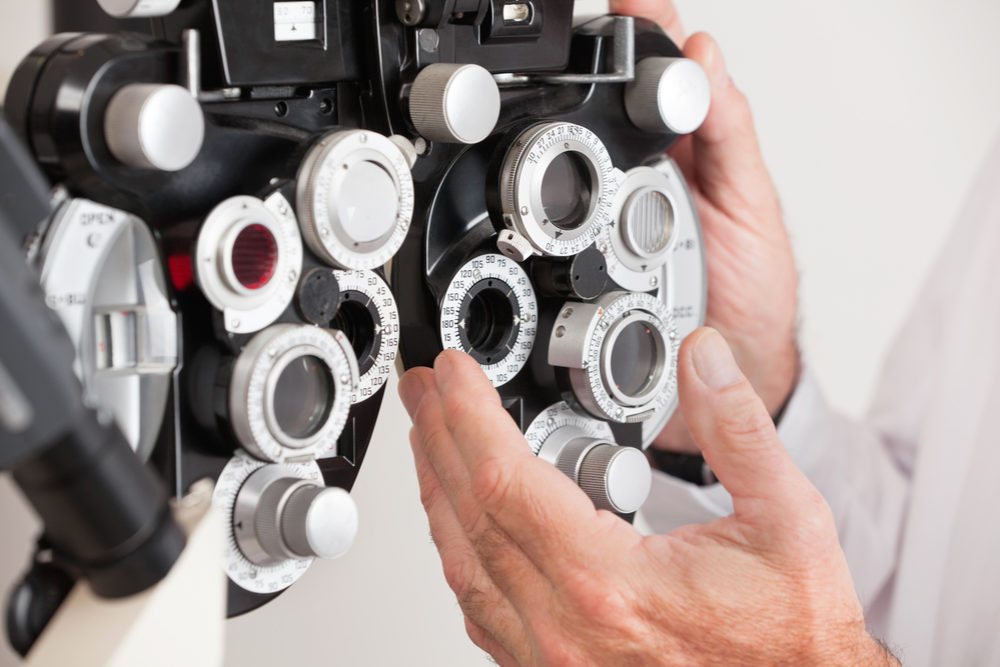Lens Implant Surgery Side Effects Include Risk of Cataracts, Pressure Around Eyes: Study

New research highlights the long-term complications that may be side effects of lens implant surgery used to help individuals correct their vision, potentially increasing the risk of cataracts or elevated pressure around the eyes.
In a study published in the Journal of American Medical Association (JAMA) on March 3, Swiss researchers found that individuals who receive implant lens surgery for high myopia or imperfections in the eyes’ curvature may be more susceptible to develop cataracts or elevated eye pressure symptoms within the decade following the surgery.
The research was led by lead author Dr. Francois Majo, of the University of Lausanne in Switzerland, presenting new evidence for long-term effects following posterior phakic lens implantation, which is a surgery that implants a lens behind the eyes iris. The study found that a majority of the subjects involved in the research began experiencing cataracts and pressure in the eye by the 10 year post surgery mark.

Did You Know?
Millions of Philips CPAP Machines Recalled
Philips DreamStation, CPAP and BiPAP machines sold in recent years may pose a risk of cancer, lung damage and other injuries.
Learn MorePosterior phakic lens implantation involves the surgical placement of a clear lens either between the cornea and the iris or just behind the iris, without removing the natural lens. Phakic lenses enable light to focus properly on the retina for clearer vision without corrective eyewear. The procedure is a common alternative to LASIK eye surgery to correct severe myopia, or nearsightedness, and has even indicated more predictable vision outcomes than other laser refractive procedures.
Eye surgeries, such as posterior phakic lens implantation, LASIK, and photorefractive keratectomy (PRK), are all forms of optical corrective surgeries to treat myopia, which is commonly referred to as nearsightedness. Patients with myopia experience a blockage of light to the retina which causes far-away objects to appear blurry.
In this latest study, researchers gathered information on 78 patients who received the lens implantation surgery for high myopia between January 1, 1998 and December 31, 20014, totaling 133 eyes due to some patients only having the phakic lens implantation done on only one eye. The objective of the study was to determine the rate of cataract surgery, lens opacity, ocular hypertension, refractive safety, predictability, and stability of the procedure for up to a decade following the implantation.
Researchers followed up on the patients at the five and ten year postoperative marks to evaluate the outcome of the procedure and to document any complications. The subjects were observed at the five year mark and researchers found that two in every five patients had experienced either lens opacity or cataracts. By the ten year mark, over 55% of the subjects had developed lens opacity or cataracts. Also after 10 years, 12 patients developed ocular hypertension which is the elevation in pressure in and around the eye that is a common cause of glaucoma.
Majo also noted in the study that by the five year mark, five of the patients had a corrective surgery known as phacoemulsification performed to combat the cataracts, and by the ten year mark had identified 13 additional patients who had the corrective cataract surgery. Phacoemulsification is a modern cataract surgery in which the eye’s internal lens is emulsified with and ultrasonic handpeice and aspirated from the eyes. This procedure replaces the aspirated fluids with a balanced salt solution to maintain the anterior chamber.
The researchers concluded from the study’s results that individuals seeking posterior phakic implantations should be warned about the potential lens implant surgery side effects discovered in this study. The evidence provided by the research suggests that complications could begin as early as five years following surgery and drastically increase the chances of complications by the tenth year, and no other comparable research has been performed that suggests the side effects of worsening conditions after ten year.
Get more articles like this sent directly to your inbox.
"*" indicates required fields
2 Comments




HMay 7, 2023 at 5:50 pm
I had the class micro string since 2018 the recall is correct I’ve had 5 surgeries loss of bison and no were to turn for legal advice I was made aware shortly after the durgery
LeAndraJune 18, 2019 at 10:11 pm
In May 2017, i had the rain drop vision surgically implanted into the cornea of my left eye. 1 yr later (2018), had the rain drop surgically removed from my left eye due to loss of vision. As of to day,2 years later from the original surgery, i have a haze that will not go away. I can not see out of my left eye. I am still under the care of my eye Dr.